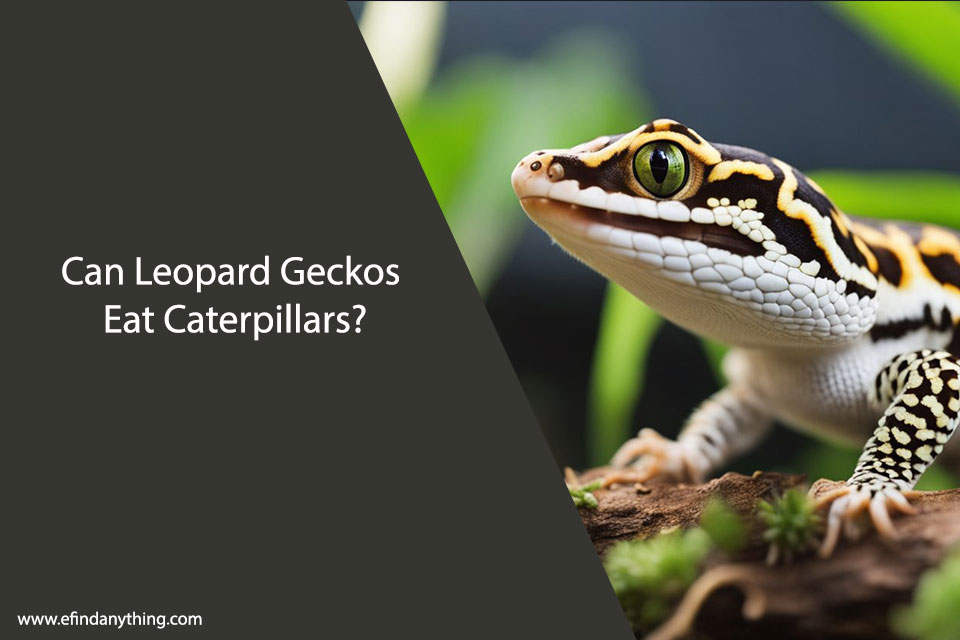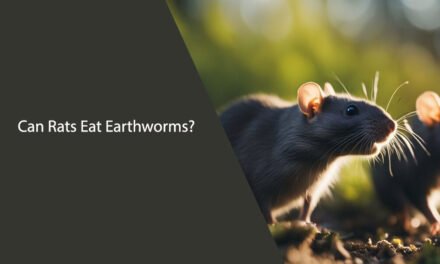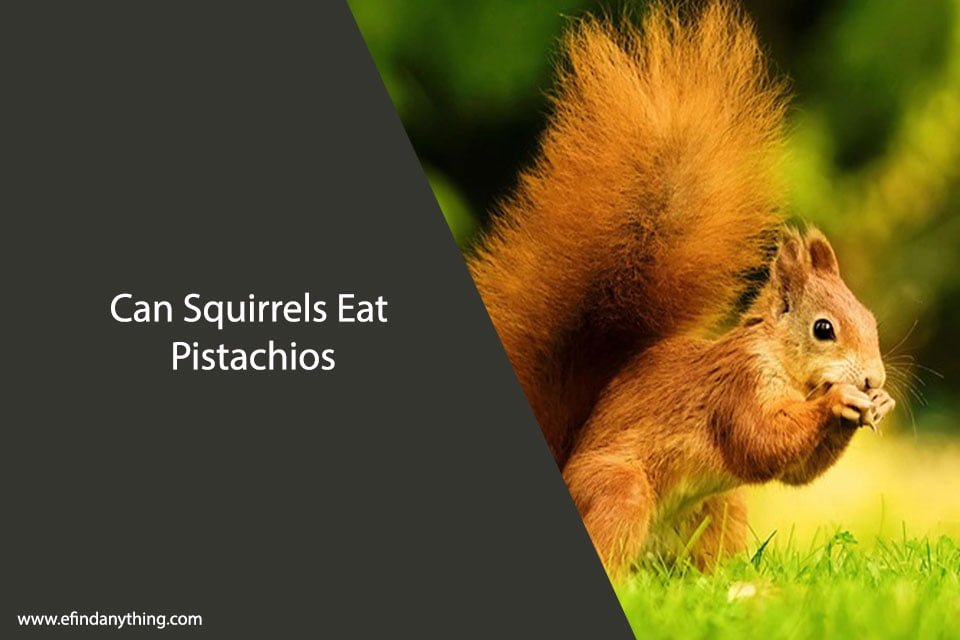Leopard geckos are one of the most popular pet reptiles in the world. They are easy to care for, have a docile temperament, and come in a variety of colors and patterns. As with any pet, it is important to provide them with a balanced diet that meets their nutritional needs. One common question that leopard gecko owners ask is whether or not their gecko can eat caterpillars.
Caterpillars are the larvae of moths and butterflies and are a common food source for many reptiles. However, not all caterpillars are safe for leopard geckos to eat. Some caterpillars are toxic and can cause serious health problems or even death. It is important to know which caterpillars are safe and which ones are not before feeding them to your gecko. In this article, we will explore whether or not leopard geckos can eat caterpillars and which types are safe for them to consume.
Table of Contents
Leopard Gecko Dietary Basics

As reptiles, leopard geckos require a specific diet to maintain their health and well-being. In the wild, they primarily feed on insects and other small invertebrates. In captivity, we must replicate this diet as closely as possible to ensure that our geckos receive all the necessary nutrients.
Leopard geckos are insectivores, meaning they only eat insects. It’s essential to provide a varied diet to prevent nutritional deficiencies. Some of the insects that we can feed our geckos include crickets, mealworms, waxworms, and dubia roaches.
It’s important to note that leopard geckos should not be fed wild-caught insects, as they may have been exposed to pesticides and other harmful substances. Instead, we should purchase insects from reputable sources or breed them ourselves.
We should also consider the size of the insects we feed our geckos. In general, the size of the prey should be no larger than the width of the gecko’s head. Feeding geckos prey that is too large can cause impaction, a potentially life-threatening condition.
In summary, leopard geckos require a varied diet of insects to maintain their health. We should avoid feeding wild-caught insects and ensure that the prey is an appropriate size for our geckos. By providing a balanced diet, we can help our geckos thrive in captivity.
Caterpillars as a Food Source

Caterpillars are a common food source for many animals, including leopard geckos. They are rich in nutrients and can provide a tasty and nutritious meal for your pet. However, it is important to understand the nutritional value and potential risks associated with feeding caterpillars to your leopard gecko.
Nutritional Value
Caterpillars are a good source of protein, which is essential for the growth and development of your leopard gecko. They also contain a range of vitamins and minerals, including calcium, which is important for bone health. Additionally, caterpillars are relatively low in fat, making them a healthy food choice for your pet.
Potential Risks
While caterpillars can be a nutritious food source for your leopard gecko, there are some potential risks to consider. Some caterpillars are toxic and can cause harm to your pet if ingested. It is important to identify the species of caterpillar before feeding it to your leopard gecko.
Another potential risk is the presence of pesticides or other chemicals on the caterpillar. If the caterpillar has been exposed to pesticides, it can transfer these chemicals to your leopard gecko when it is consumed. It is important to ensure that any caterpillars you feed to your pet are from a safe and reliable source.
In conclusion, caterpillars can be a nutritious and tasty food source for your leopard gecko, but it is important to understand the nutritional value and potential risks associated with feeding them. By taking the necessary precautions and ensuring that any caterpillars you feed to your pet are safe, you can provide your leopard gecko with a healthy and varied diet.
Feeding Caterpillars to Leopard Geckos

Caterpillars can be a great addition to a leopard gecko’s diet. They are a good source of protein and can provide some variety to their meals. However, it is important to properly prepare and serve caterpillars to ensure the health and safety of your gecko.
Preparation and Serving
Before feeding caterpillars to your leopard gecko, it is important to ensure that they are safe to eat. Some caterpillars can be toxic or have spines that can harm your gecko. It is best to stick to commercially raised caterpillars, such as mealworms or waxworms, that are sold as reptile food.
Once you have obtained safe caterpillars, it is important to properly prepare them. You can either feed them live or pre-kill them. If feeding live, make sure to supervise your gecko to ensure that they do not get injured by the caterpillar’s spines. If pre-killing, make sure to thoroughly cook the caterpillar to kill any bacteria or parasites.
When serving caterpillars, it is important to ensure that they are an appropriate size for your gecko. Generally, it is recommended to feed caterpillars that are no larger than the space between your gecko’s eyes. You can also chop up larger caterpillars into smaller pieces to make them easier to eat.
Frequency and Portion Size
Caterpillars should not make up the majority of your leopard gecko’s diet. They should be fed as an occasional treat or supplement to their regular meals. It is recommended to feed caterpillars once or twice a week, depending on your gecko’s individual needs.
When feeding caterpillars, it is important to monitor the portion size. Overfeeding can lead to obesity and other health issues. As a general rule, caterpillars should make up no more than 10% of your gecko’s diet.
In conclusion, caterpillars can be a nutritious and enjoyable addition to your leopard gecko’s diet when prepared and served correctly. However, it is important to exercise caution and moderation when feeding them to ensure the health and safety of your gecko.
Alternatives to Caterpillars
If you are looking for alternative food options for your leopard gecko, there are a variety of commercial diets and live prey varieties available. Here are some options to consider:
Commercial Diets
Commercial diets are a convenient option for leopard gecko owners who prefer not to deal with live prey. These diets come in the form of pellets or powders that can be mixed with water to create a paste. Some popular brands include Repashy, Pangea, and Zoo Med.
When choosing a commercial diet, it is important to look for one that is specifically formulated for leopard geckos. These diets should contain a balanced combination of nutrients, including protein, fat, and vitamins.
Live Prey Varieties
Live prey is a natural and nutritious option for leopard geckos. Here are some live prey varieties to consider:
- Crickets: Crickets are a staple food for leopard geckos. They are high in protein and easy to digest.
- Mealworms: Mealworms are another popular option. They are high in protein and fat, but should be fed in moderation to avoid obesity.
- Dubia Roaches: Dubia roaches are a nutritious option that are high in protein and low in fat. They are also easy to digest.
When feeding live prey, it is important to ensure that the prey is appropriate in size for your leopard gecko. Prey that is too large can cause digestive issues, while prey that is too small may not provide enough nutrition.
In conclusion, there are a variety of alternative food options for leopard geckos. Whether you choose a commercial diet or live prey, it is important to provide a balanced and nutritious diet for your pet.
Monitoring Your Leopard Gecko’s Health
As responsible pet owners, it is our duty to ensure our leopard geckos are healthy and happy. Monitoring our gecko’s health is crucial in identifying any potential health issues and addressing them promptly. Here are some tips on how to monitor your leopard gecko’s health:
Observation
Observation is key in monitoring our leopard gecko’s health. It is essential to observe our gecko’s behavior, appetite, and physical appearance daily. Changes in behavior or physical appearance could be a sign of an underlying health issue.
Weight
Weighing your leopard gecko regularly is an effective way to monitor their health. A healthy adult leopard gecko should weigh between 45-70 grams. Any significant weight loss or gain could be a sign of an underlying health issue.
Shedding
Leopard geckos shed their skin every 4-6 weeks. It is crucial to monitor their shedding process as any difficulties could be a sign of an underlying health issue. Ensure that the humidity level in their enclosure is adequate, and they have a moist hide to aid in shedding.
Veterinary Visits
Regular visits to a reptile veterinarian are essential in ensuring our leopard gecko’s health. A veterinarian can perform a thorough examination, including fecal tests, to identify any potential health issues.
By following these tips, we can ensure our leopard geckos are healthy and happy. Remember, prevention is key in maintaining our gecko’s health.
Safe Feeding Practices

When feeding leopard geckos caterpillars, it is important to follow safe feeding practices to ensure the health and well-being of your pet. Here are a few tips to keep in mind:
- Choose healthy caterpillars: Make sure the caterpillars you offer are healthy and free from pesticides or other harmful chemicals. Avoid feeding your leopard gecko caterpillars that have been found outside, as they may carry parasites or diseases.
- Offer a varied diet: While caterpillars can be a nutritious addition to your leopard gecko’s diet, they should not be the only food item offered. We recommend offering a variety of insects, such as crickets, mealworms, and dubia roaches, to ensure a balanced diet.
- Monitor your gecko’s behavior: Keep an eye on your leopard gecko’s behavior after feeding them caterpillars. If you notice any signs of illness, such as lethargy, loss of appetite, or diarrhea, stop feeding them caterpillars and consult a veterinarian.
- Feed in moderation: As with any food item, caterpillars should be fed in moderation. We recommend offering them as a treat once or twice a week, rather than as a staple food item.
By following these safe feeding practices, you can ensure that your leopard gecko stays healthy and happy while enjoying the occasional caterpillar treat.
Frequently Asked Questions
Are there any caterpillars that are safe for leopard geckos to consume?
While some caterpillars are safe for leopard geckos to eat, it is generally recommended to avoid feeding them caterpillars due to the potential risks of toxicity. Some caterpillars may contain harmful chemicals or toxins that can cause harm to your leopard gecko.
What types of worms can leopard geckos eat apart from caterpillars?
Leopard geckos can eat a variety of worms, including mealworms, waxworms, silkworms, and hornworms. It is important to provide a varied diet to ensure your leopard gecko receives all the necessary nutrients.
How many hornworms are appropriate to feed a leopard gecko at one time?
It is recommended to feed your leopard gecko 2-3 hornworms at a time, depending on the size of the gecko. Overfeeding can lead to health issues, so it is important to monitor their food intake.
Can feeding hornworms to leopard geckos pose any risk of harm?
Hornworms are generally safe for leopard geckos to eat. However, it is important to ensure that the hornworms are gut-loaded and free from any harmful chemicals or toxins.
What are the potential dangers of feeding wild-caught insects like caterpillars to leopard geckos?
Feeding wild-caught insects to your leopard gecko can pose a risk of exposure to harmful pesticides, chemicals, or parasites. It is recommended to only feed captive-bred insects to your leopard gecko.
Which insects should be avoided in a leopard gecko’s diet due to toxicity concerns?
Some insects, such as fireflies and beetles, should be avoided in a leopard gecko’s diet due to their toxicity. It is important to research and ensure that any insects fed to your leopard gecko are safe and free from harmful chemicals or toxins.





